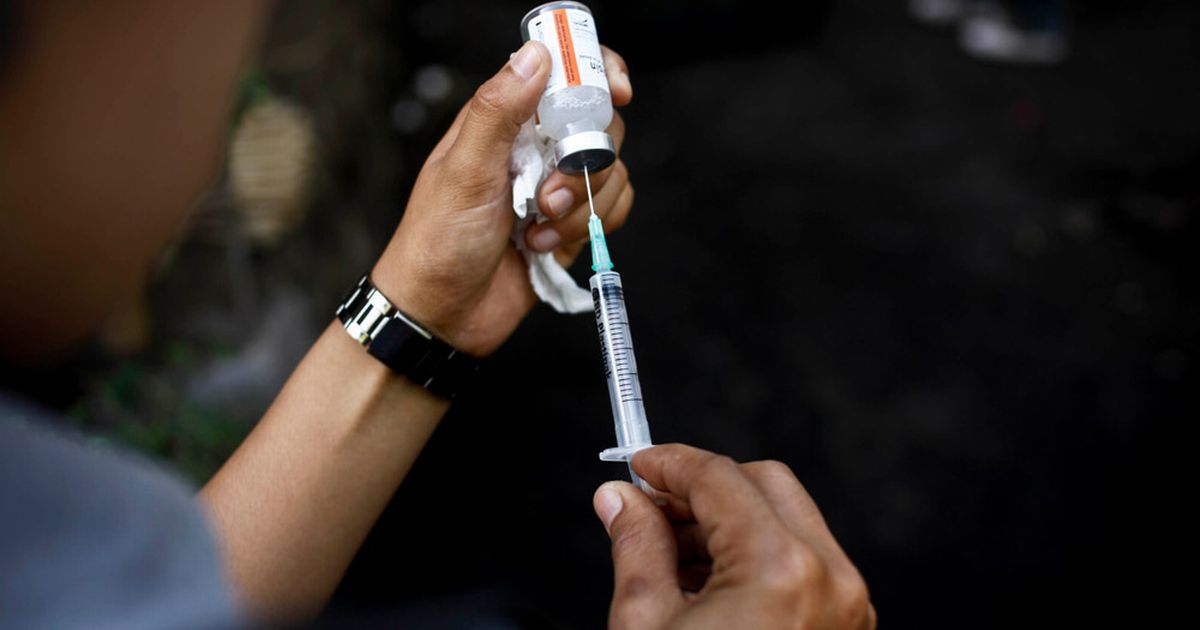Ways To Prevent And Treat Typhoid Fever
Typhoid fever is an illness caused by the bacteria called Salmonella enterica serotype Typhi or Salmonella paratyphi. Usually, this type of bacteria contaminates water or food from a human and is spread to others in the same region. This bacteria can live for weeks in dried sewage or water. Once an individual contracts this bacteria, their white blood cells in their bone marrow, spleen, and liver carry the bacteria into the bloodstream where they continue to rapidly multiply.
Once the bacteria have invaded the bloodstream, the individual will experience a fever, headaches, lethargy, diarrhea, and poor appetite. When the patient's body has fought off the infection and no longer exhibits symptoms, they often have a relapse. There is no cure for typhoid fever, but symptoms can be treated while the body fights off the bacteria. Because typhoid fever is very contagious, there are multiple ways to prevent it.
Getting Vaccinated

A vaccine is available for typhoid fever for individuals at a high risk of contracting the illness. Patients at a high risk of having contact with the bacteria that causes typhoid fever include anyone in contact with an infected individual, working in a laboratory setting studying typhoid, or traveling to a country where typhoid is prevalent. The typhoid vaccination comes in the form of an injection or an oral typhoid vaccine. The injection form of the vaccine is made from a polysaccharide or sugar that coats the bacteria's surface. The oral form is called Ty21a, and it is a weakened variation of the live bacteria.
In order for the injection to be effective, the patient will need one initial dose and a booster every two years. Individuals who take the oral form of the vaccine will need four doses every other day for one week, and then a booster every five years. The typhoid vaccine is not given to children under two years old and individuals who have a known allergy to any of its ingredients.
Avoid Consuming Untreated Water And Raw Fruits And Vegetables

Typhoid fever is prevalent in regions of the world with poor sanitation and not enough safe drinking water. Countries in Africa, South-Central and Southeast Asia, the Caribbean, and Latin America have the highest prevalence of typhoid fever. Not every individual who is a carrier of typhoid will have active noticeable symptoms. When water or food becomes contaminated by anyone who is actively infected with or is a carrier of typhoid fever, the illness can be spread to others when they consume the food or water.
Because the bacteria that cause typhoid fever can live in water for long periods, it is imperative to ensure all water consumed has been sanitized. Water for washing food, brushing teeth, drinking, and making ice should be boiled or disinfected prior to use. Food that comes from street vendors and food kept and served at room temperature can easily become contaminated with the bacteria that causes typhoid fever. It is best to avoid consuming raw fruits and vegetables altogether by cooking all food thoroughly.
Frequent Hand Washing

Frequent hand washing can help prevent individuals from contracting typhoid fever. Bacteria, viruses, and parasites can live on the hands for as long as an individual allows them. When a patient with contaminated hands touches any other object, bacteria can live on the object for several weeks to several months. When another individual touches the same contaminated object, the bacteria can live on their hands as long as they allow. Because hands are a hospitable environment for these microorganisms, frequent and proper handwashing is essential to stopping the spread of typhoid fever.
Not only should hands be washed with warm water and antibacterial soap after using the restroom, but also before and after handling food, after changing a diaper, before and after caring for a sick patient, before and after treating a wound or cut, after touching an animal, after handling animal waste, after touching animal feed, after handling pet treats or pet food, and after touching garbage. Washing hands with clean running water and antibacterial soap will effectively remove parasites, bacteria, and viruses from the hands. In some regions, there may not be sanitized water available for handwashing. However, washing the hands with unsafe water and soap is more beneficial than not washing them at all.
Course Of Antibiotics

A course of antibiotics is the most common way typhoid fever is treated. Depending on the region the patient is in, one antibiotic may be preferred over another if the bacteria have become resistant. Antibiotics effectively kill all of the strains of the Salmonella bacteria that causes typhoid fever. Prior to the use of antibiotics to treat this illness, the mortality rate was one out of every five infected individuals. With the use of antibiotics, there is typically improvement in symptoms within two days, and complete cessation of symptoms by ten days.
Some individuals who become infected with typhoid fever that goes untreated can develop the chronic form of the illness. For such patients, prolonged courses of antibiotics are used. Relapses or recurrent infections with typhoid fever are common because the bacteria is not always entirely eradicated after symptoms have resolved. It is not uncommon for a patient to stop taking their antibiotics when they feel completely relieved of all their symptoms. This practice is dangerous, as the bacteria are still active within the body until several stool samples test negative for it.
Drinking Fluids And Intravenous Fluids

Typhoid fever has the most considerable effect on an infected individual's digestive system, so drinking fluids and intravenous fluids play an important role in the treatment of the illness. After an individual consumes contaminated food or water, the bacteria begin to multiply in their stomach and small intestine. This causes pain, nausea, diarrhea, constipation, and other digestive symptoms that can cause the patient to become dehydrated easily. Dehydration can be prevented by drinking plenty of fluids as part of the patient's typhoid fever treatment regimen.
In more severe cases, the individual may not be able to keep enough fluids down to stay hydrated with oral fluid consumption. These patients are usually hospitalized where they stand placed on supportive care to resolve their dehydration and help their body fight off typhoid fever. Supportive care includes giving the individual fluids and sometimes antibiotics directly into their bloodstream through an intravenous line. This method allows the patient to stay hydrated by bypassing the poorly functioning digestive tract to deliver fluids.
